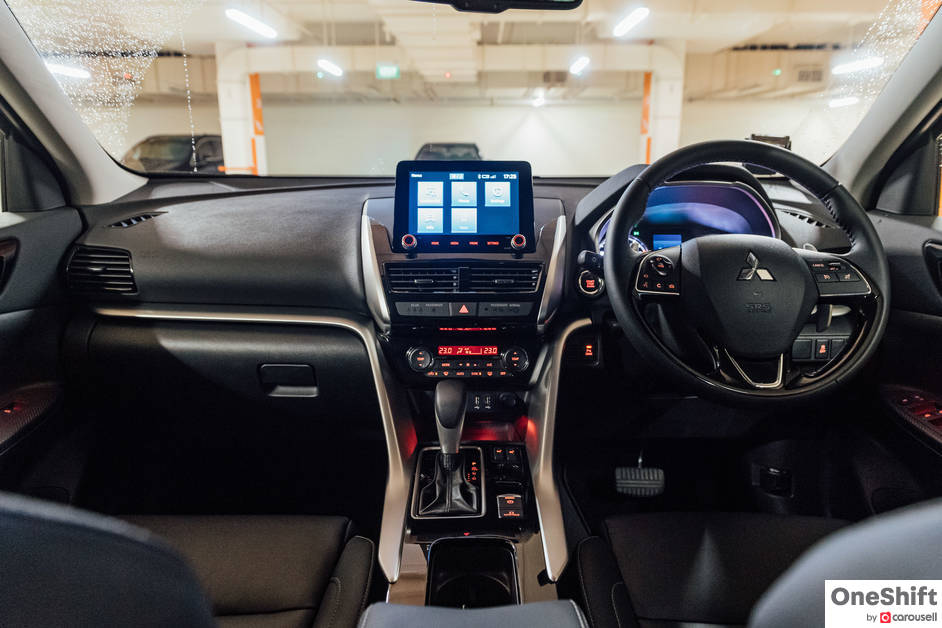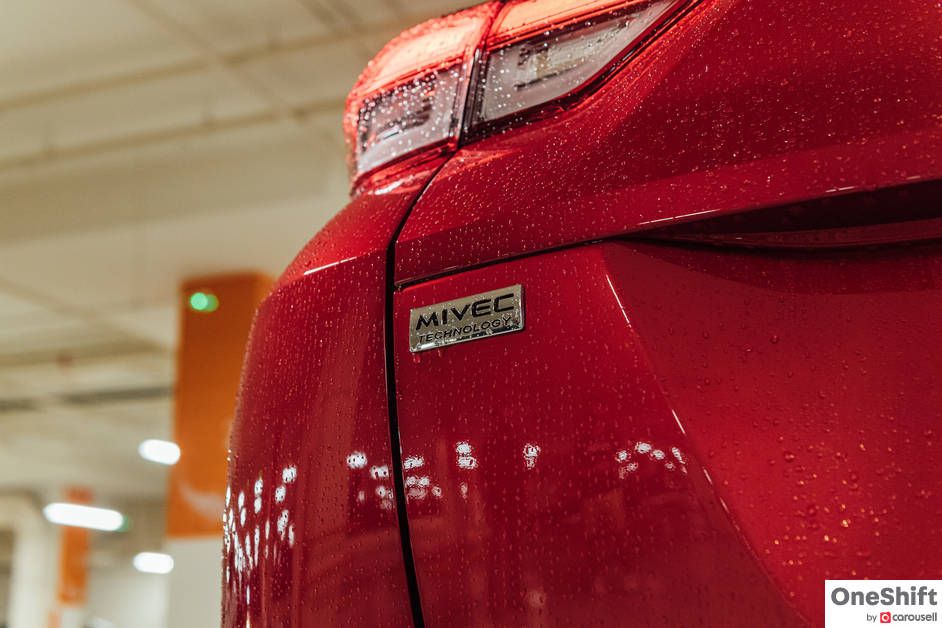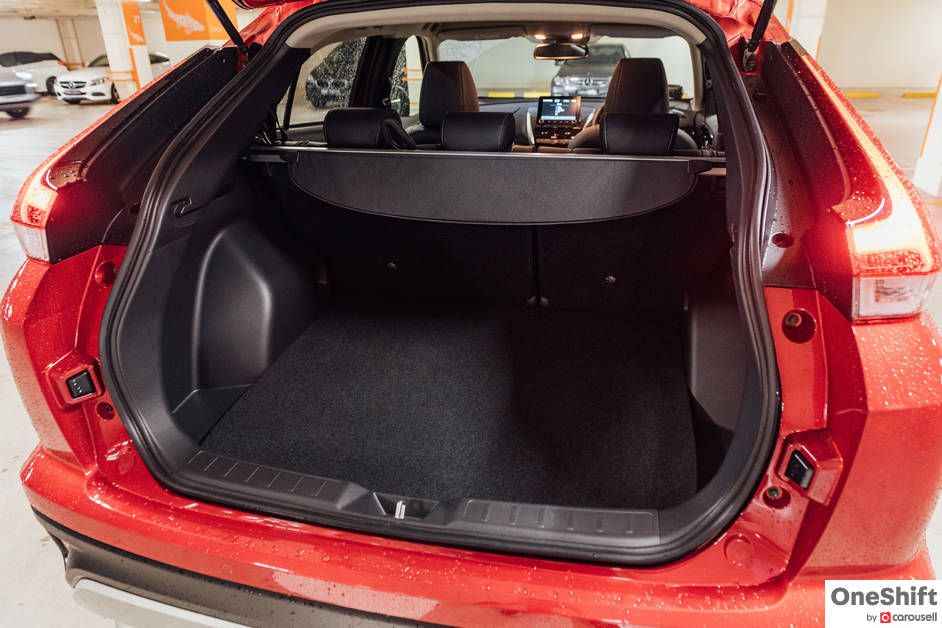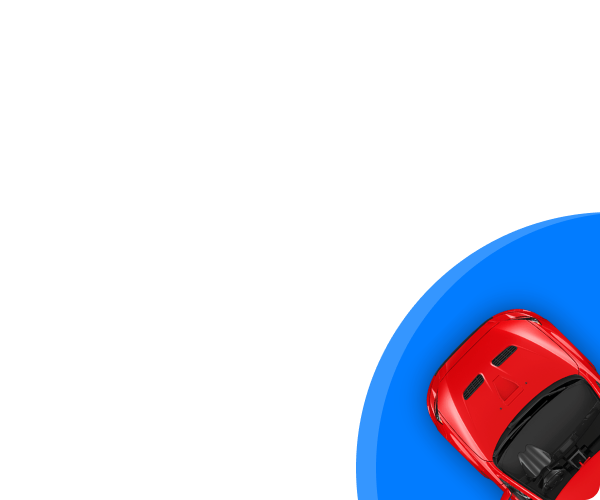Mitsubishi Eclipse Cross 1.5T Style (A) Review: Prettier Than Before
The updated Mitsubishi Eclipse Cross gets a makeover, with a redesigned front fascia, featuring a sharper and more aggresive looking daytime running light cluster and a new blacked-out grille. At the rear, the polarising light bar across the rear windscreen has also been dropped, in favour of a sleeker and classier, albeit more conventional design.


The Mitsubishi Eclipse Cross became well known for two reasons. The first, a polarising feature - its unique signature light bar across the rear windscreen. Some people loved it, and some people hated it. The second, and perhaps more important reason, was the fact that the Eclipse offered consumers best-in-class practicality and space at a price tag that was reasonable for the masses. While current COE price hikes have cast some doubt on the term “reasonable”, the updated Eclipse Cross provides much of the same functionality as its predecessor, in a cleaned up and more sophisticated looking package.
The updated Eclipse Cross sports a redesigned front fascia, with a sleeker and sharper daylight running light cluster, while still maintaining the segregation from the headlamp cluster - both of which are full LED. The front grille of the car has also sort of been de-chromed, and now features a matt black grille, which in our opinion, gives the car a younger, more outgoing demeanour.

The overall silhouette of the car remains largely similar, but the bigger update comes at the rear of the car, where Mitsubishi have done away with the lightbar across the rear windscreen, replacing it with more sensible styling - a move that is appreciated, both from a visibility standpoint, and an aesthetic standpoint. As a result, I think the overall aesthetic of the car looks a lot more classy, and feels more premium as a result.

Inside, the Eclipse Cross remains largely unchanged, and there are no extensive changes from the previous setup. Although this is the case, the cabin meets expectations for a car in this segment. Cheaper plastics still litter the cabin, but that is not unexpected in this segment, and Mitsubishi does enough to maintain parity with most of its competition in this regard. That said, often used switchgear like the ignition button and the gear selector feel pretty solid and pleasant to touch and press. Most notably, the seats are incredibly comfortable, and when combined with the car’s elevated and commanding driving position, makes for a good long distance driving setup. I would have preferred more seat adjustment range, just because I generally prefer a lower slung driving position, but the range of adjustment should be adequate for most.
Although the Eclipse Cross’ styling exudes an adventurous spirit, the car drives quite differently, and offers users the mature, long range comfort of a full sized sedan as opposed to the punchiness of a youthful crossover. This was a little unexpected, but not a bad thing in our books. The 1.5-litre turbocharged power plant does a decent job in start-stop conditions and provides smooth and purposeful acceleration off the line, but one should not make the mistake of gunning the CVT too hard, as rubberbanding is still prevalent under heavier acceleration - a common occurrence in CVT transmissions. Perhaps a downside of most CVT transmissions, the Eclipse Cross does not feel anywhere near as powerful as its 163 bhp indicated on paper - but that's perhaps for the better, as the car provides a much more refined and enjoyable drive under light to moderate acceleration. Interestingly, the car is fitted with paddle shifters, aluminium ones no less - an odd inclusion for a car with a CVT transmission if we’re being honest.

However, once up at speed, the car’s 1.5 tonne weight shines through and the car feels much more planted and stable than most of its other Asian competition - a major plus point in favour of the Eclipse Cross. Down the expressway, the car deals with outer lane speeds quite effortlessly, with the 4 cylinder engine ensuring that the car runs at less than 2,000 RPM up to speeds of 100 km/h. This also means that the Eclipse Cross feels unhurried and rather calming to drive. The suspension setup is also well suited for Singapore’s roads, and sits on the softer side of things, ironing out imperfections on the road surface with the grace of a more premium car. There is a tradeoff though, as the soft suspension does tend to bump the car over speed humps - something that could possibly be ironed out with better tyre pressure calibration to even out the compression rate of the suspension and the tyre. All in all though, it is evident that the Eclipse Cross is more suitable for use as a comfortable long distance family cruiser than it is on a school run.
Premium touches and driving dynamics are unlikely reasons for consumers to lean toward the Eclipse Cross, but the amount of car offered does put the Eclipse Cross back in contention when it comes to being value for money. The abundance of hardware means that front passengers are extremely comfortable, with an imposing amount of dashboard panelling helping the car feel like a bigger car than it is. Second row passengers will also be extremely happy with legroom and the almost flat floor, although anyone above 175m tall might find things getting a little cosy in the headroom department - thanks to the Eclipse Cross attempting to achieve a sloping roofline for aesthetics sake.

Interestingly, the Eclipse Cross has a smaller than average boot space with only 405 L. This is in contrast to other cars in the same segment that have up to 500 L of space in the rear. However, this compromised boot space is likely what gives the Eclipse cross its spacious second row - A positive trade-off in our opinion. After all, how much cargo does one carry on a day-to-day basis? In essence then, the Eclipse Cross is the best-in-class when it comes to people carrying practicality and passenger comfort.
Truly, the Eclipse Cross sits in an extremely competitive segment. Due to the current COE price hike, The Eclipse Cross has to contend with competitors boasting a wide range of positive traits. For example, there are cars at a similar to lower price point which feature modern fuel saving technology such as hybridisation or even something as simple as a dual clutch transmission. On the flip side, the Mitsubishi Outlander, which is about the same price, has seven seats, and is arguably more practical. Also, it comes with a 2 L engine instead of a 1.5 L. In essence then, the viability of the Eclipse Cross boils down to a few simple things. The first thing would be its best-in-class cruising capabilities and ride comfort. The second thing, although subjective, would be its styling and aesthetic appeal.
Credits:








Get the Best Price for your used car
from 500+ dealers in 24 hours

- Convenient and Hassle-Free
- Consumer Protection
Transparent Process
With No Obligation








